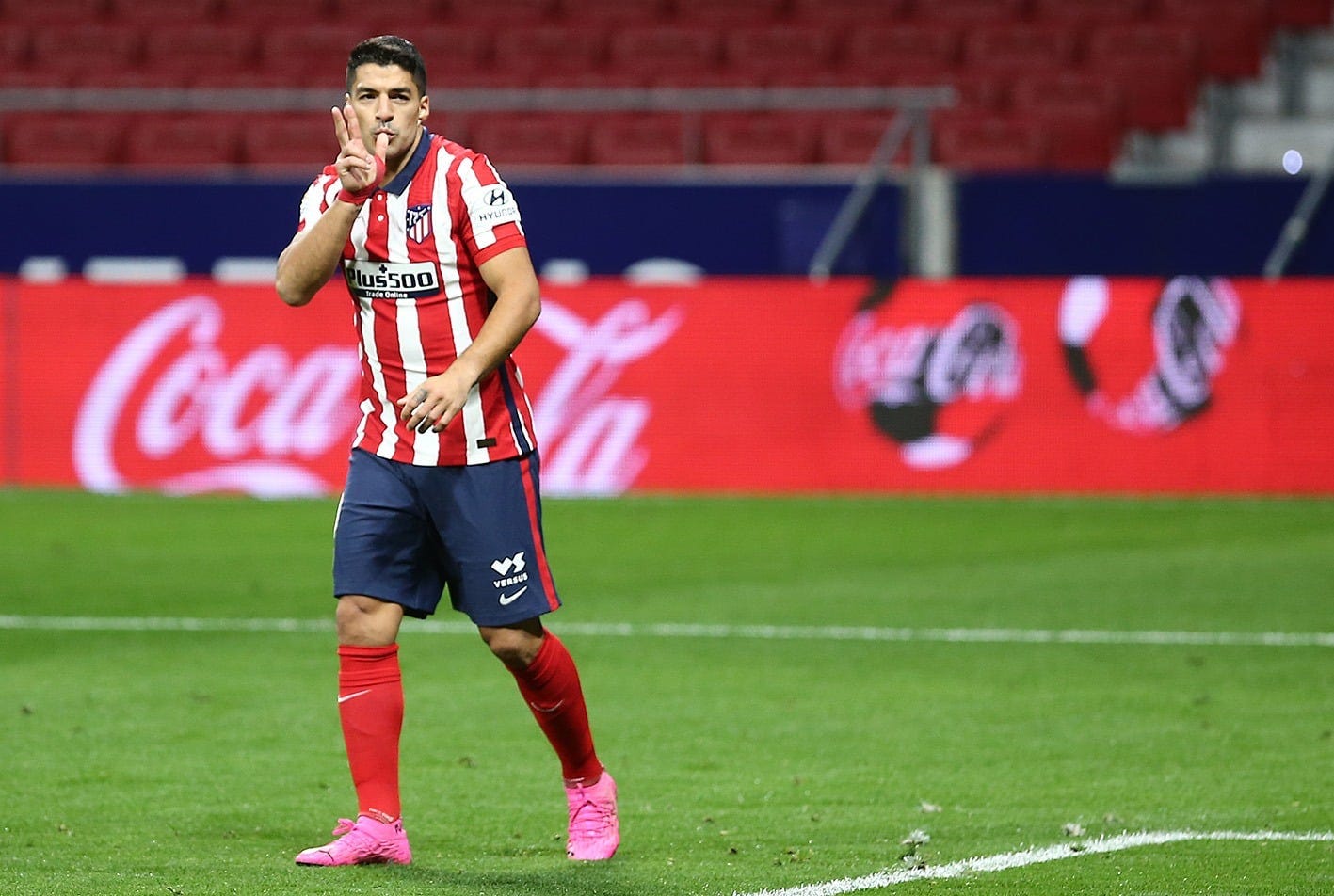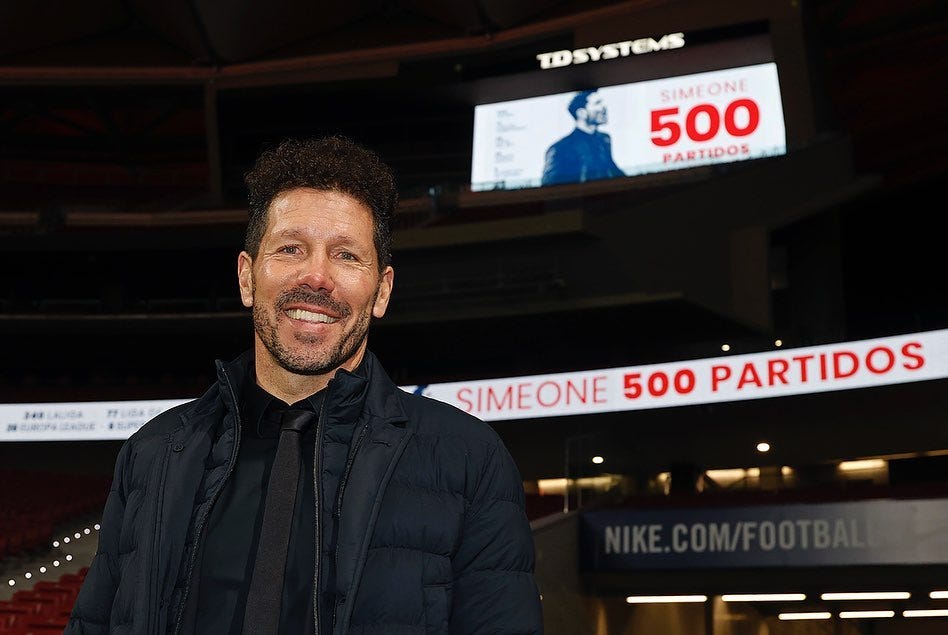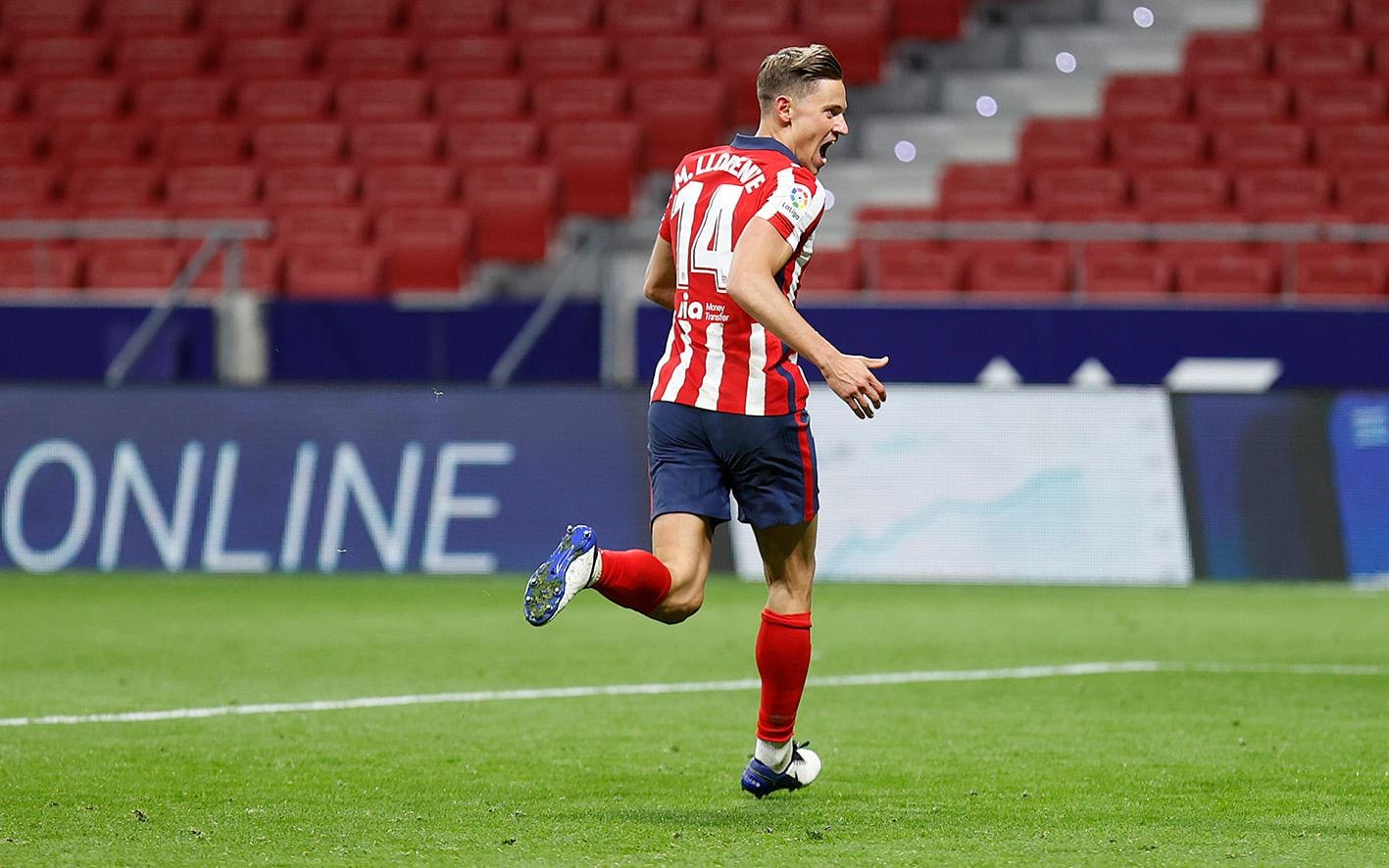Suárez is the right betrayal to the Cholismo
All Simeone needed to win more consistently was a striker capable of putting clinical finishing ahead of work rate
Football fans in Spain keep on moaning about the pitiful seasons both defending champions Real Madrid as main challengers FC Barcelona are experiencing. It’s either the inability to buy good players at decent prices or the fact that the board is being held hostage by the best of them all. But that is unfair to the extraordinary campaign Atlético Madrid is making at La Liga. By beating Cadiz CF 4-2 away from home, on Sunday, the “Colchoneros” reached the League’s halfway mark with an astounding 50 points, ten ahead of both Real Madrid and FC Barcelona – and with a game in hand. It’s not only hard to see them losing this League as if they keep the pace, they’ll end up on 100 points, equaling a record held by both their rivals. Atlético is not top due to Real and Barça’s poor seasons. They are top because they solved their major dilemma, which was how to mix the “Cholista” philosophy with the ability to score goals. All thanks to the contribute of a single player: Luís Suárez, who was let go by FC Barcelona, and even this Sunday added two more goals to his already impressive tally.
Atlético’s trademark since the appointment of Diego Pablo Simeone as coach has been the same throughout the years and no matter the squads they have assembled. The “Cholismo”, a name that comes from Simeone’s knick-name as player (“El Cholo”, given to him by a coach because that was also the knick-name of another Simeone he had known in the 70s), was transformed into philosophy. It means that players have to fight for every ball as if it were the last of their lives, that the team must always stay together, endure everything together, keep defensive solidarity and take the chances they have to score on counter attacks or set pieces. It’s a defensive ideal, judged to be the only one Atlético could rely on to even have a chance of competing with both Real Madrid and FC Barcelona, who have bigger budgets and spending capacity. The “Cholismo” also defends the idea that you should take every match as it comes, not losing too much time with long-term thinking, what may explain the fact that Simeone’s Atlético is fairly stronger on Cup competitions than on Leagues. Since the Argentinean coach’s arrival, in January 2012, the second Madrid team was Champions League finalist for a couple of times (2014 and 2016), also grabbing the Europa League twice (2012 and 2018) as well as one European Super Cup (2018), one Spanish Cup (2013) and one Spanish Super Cup (2014). In the same period, they only won one Spanish Liga (2014).
Hard to beat at the back
In the nine Ligas he ended with Atlético Madrid, Simeone has never seen his team end as the best attack. The best they did in this particular was third, for three times, in 2014, 2016 and 2017. Last season they had only the seventh attack of the competition, scoring 51 goals in 38 matches, behind FC Barcelona’s 86, Real Madrid’s 70, Villarreal CF’s 63, Real Sociedad’s 56, Sevilla FC’s 54 and Granada CF’s 52. But on the other end of the pitch they were almost always intractable: in the same nine seasons, Atlético’s defense was the least beaten for six times (2013, 2014, 2016, 2017, 2018 and 2019), ending second in two other occasions (2015 and 2020). Only at his first season in charge – half season, to say the truth – had they only the fourth best defense. That should be enough to understand where’s the soul of the team and the core of the “Cholismo”. Which is to fight, always fight, and be as cynical as you can in order to take advantage of other teams’ momentary softness. Until recently. This season, Atlético has the second better attack in the League, just one goal behind FC Barcelona – but with one game in hand, what should allow them to overcome the Blaugrana. All things considered, Atlético got 50 points out of their first 19 League games, which is halfway through the competition, putting them on track to equal Real Madrid’s and FC Barcelona’s record seasons, when they ended being champions with 100 points, back in 2012 and 2013. The only time in their history Atlético had these same 50 points halfway through the competition, they were champions: it was in 2014 and they only had to add 40 more on the second half in order to beat FC Barcelona by three.
So, did Simeone change his approach? Not quite. In fact, Atlético still puts a lot of emphasis in defending: they have, by far, the best defense of the League, with ten goals conceded, six less than second best team, Sevilla FC. The small betrayal Simeone admitted to his “Cholismo” principles was the signing of a striker that values more quality finishing than work rate. At 34 years old, with a bad knee and not so fit as he had been at his peak (he even seems a bit overweight, sometimes), Uruguayan Luis Suárez is not a compulsory runner, much less when he doesn’t have the ball. Suárez does not press opponents like his predecessors did. He is not a Diego Costa kind of forward, even if he is as prone to conflict and to pick up a good fight as the most “Cholista” of his predecessors. But, after being let go by FC Barcelona, Suárez is currently the best goalscorer in the League, with 14 goals in 51 shots. Or, even more significant, in just 20 attempts on target. Suárez scored 14 goals with a xG (Expected Goal rating) of 9,1, but that is not even the most important contribution he is giving to the team. After all the fuss about the unsuitability of an eminently technical player such as João Félix to the “Cholismo”, Atlético having paid Portuguese club Benfica 126 million euros to have the youngster replacing French Antoine Griezmann, who left to FC Barcelona for the same amount, the gamble on Suárez meant that Simeone was open to ideas other than his own about gregariousness and defensive work. And the least you can say is that it paid off.
Truth be said, Simeone changed some things in his formation. This season, Atlético is not playing the ordinary 4x4x2, having opted instead for a 3x5x2 formation based on a three strong men protection to the best goalkeeper in La Liga, which is Jan Oblak. Savic, Giménez (or Felipe) and Hermoso provide the necessary coverage for the team to have Trippier and Lodi as the “carrilleros”, the wide men that cover all the pitch and allow midfielders and forwards to pay more attention to the inner field – and thus solidarity. Koke, Marcos Llorente and Saúl Ñíguez are those midfielders, as strong at circulating the ball as they are on the capacity to dispossess the opponent, while Félix and Suárez made an excellent pairing upfront. The Uruguayan has 14 goals to his name (and a couple of assists) in the League, while the Portuguese made six goals and four decisive passes. Llorente, the midfield general captured from Real Madrid’s waste bin 18 months ago – for 30 million euros that already seem to be a bargain – was also key to the team’s offensive crescendo, as he is currently on six goals and five assists. The three of them reflect another “Cholismo” basic principle: the capacity to turn weaknesses into strengths, as even if Félix was one the most expensive transfers in 2019, he only signed for the club after FC Barcelona had Griezmann use his release clause and leave Madrid for Catalonia. That is even clearer in the Suárez and Llorente affairs, as both were let go by the two bigger clubs in Spain.
Digging waste bins
In the summer of 2019, Llorente was told by Zinedine Zidane, at Real Madrid, that the club did not count on him. More or less at the same time, Simeone understood that he would not be able to keep Rodri, wanted by Pep Guardiola at Manchester City. Rodri left to England for 62 million euros, thus giving Atlético’s board the power to invest in Llorente, who was not only a player formed in the Real Madrid academy, but also the youngest member of a Real Madrid family: Marcos’ great-uncle is Paco Gento, a legendary six-times Champions League winner with the white shirt on; his father is Paco Llorente, an Atlético Madrid graduate who responded to the Real Madrid call when he was 20 years old, still in time to win La Liga three times at the Bernabéu. On the Marcos Llorente affair, Real Madrid tried to avoid the move being permanent, as it would be to a fierce rival, making it just a loan with a buy-back clause included, but the player didn’t accept that: he wanted to rule over his own future. Today, already a full international with Spain and a key player in Simeone’s team, as he is as tactically wise as he is hard-worker, making it possible for the coach to use him as a more offensive midfielder, Llorente doesn’t regret it. “If I didn’t meet Simeone, there’s a good chance I’d still be playing as a defensive midfielder. All credit belongs to him. There are coaches with this capacity to see things and he is one of them”, Llorente said recently, subscribing all the basic “Cholismo” principles. “Every training session with Simeone is like a war, with brutal intensity. That’s something you take home every day”, he added.
One year later, it was even easier for Atlético to get hold of Suárez. After four League titles, four Spanish cups, one Champions League and 198 goals in six seasons, the Uruguayan was told by new Barça coach Ronald Koeman that he was out on a phone conversation that lasted less than one minute. The issue were FC Barcelona’s financial difficulties – it is now understood that all generated on the enormous contract signed with Lionel Messi. The club agreed to let him go for free and even offered to pay the difference between his future wages and the 14 million euros he would earn in the last year of his running contract, if he’d stay. Suárez agreed a 7,5 million euro per year contract with Alético, on the condition that there would be no transfer fee, but when that transpired to Josep Maria Bartomeu, the FC Barcelona president tried to block the move. The Catalans were afraid of repeating yet the same mistake they had done in 2013, when the let go David Villa for Atlético and the Spanish striker eventually won the League for his new club.
Suárez stood firm and said that if he was not allowed a move to the Wanda Metropolitano, he would not only stay at FC Barcelona as he would also disclose all the details of the negotiation. The only way for everybody to save face was having Atlético pay a transfer fee FC Barcelona gave them back, on form of the player’s wages. Simeone was happy with that and found the necessary finishing touch to his squad. According to Spanish statistician Mister Chip, up until now, only four players in history scored 14 goals in their first 16 games with the club. “Pruden” Sánchez, in 1940/41; Baltazar in 1988/89 and Vieri in 1997/98. They all were “Pichichi”, the title given to the best goalscorer in the League, but only the fist got a La Liga champion’s title. It’s up to Simeone to ensure his Atlético provides the whole package to Suárez.






